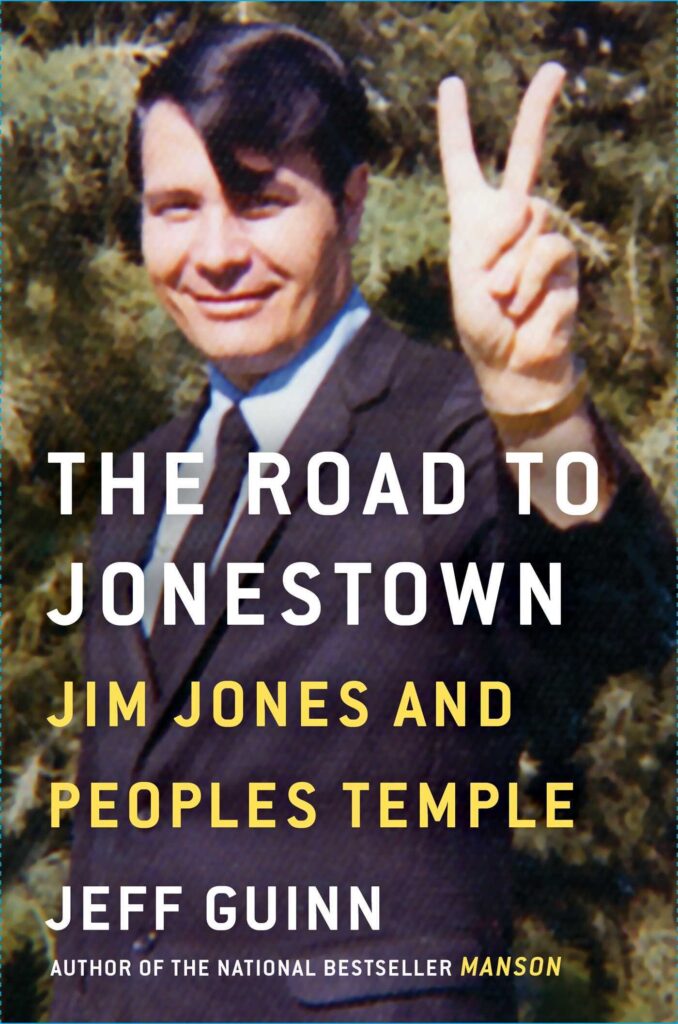
Jeff Guinn’s The Road to Jonestown is an in-depth and meticulously researched account of one of the darkest episodes in American history: the Jonestown Massacre. It delves into the life of Jim Jones, the enigmatic and manipulative leader of the Peoples Temple, who led over 900 of his followers to their deaths in a mass suicide in the remote jungles of Guyana in 1978.
Guinn begins by exploring Jim Jones’s early years. Born in 1931 in Crete, Indiana, Jones was raised in poverty. From a young age, he exhibited an unusual obsession with religion, death, and the desire for power. These traits, combined with his complex psychological makeup, foreshadowed the troubling figure he would become. His early fascination with Pentecostalism, along with his commitment to social justice, led him to merge these passions in a way that would become the foundation for his future cult leadership.
In the 1950s, Jim Jones founded the Peoples Temple in Indianapolis. Initially, it seemed like a progressive church that embraced racial integration, civil rights, and social welfare. Jones’s charisma and fiery sermons attracted a diverse congregation, including marginalized communities. He framed himself as a messianic figure, promising a utopian society free from oppression. While his rhetoric was powerful, Guinn also reveals the dark undercurrents that began to emerge, even in these early stages. Jones manipulated his followers, demanded unquestioning loyalty, and used fear and intimidation to keep them under his control.
By the 1960s, Jones had expanded his influence, moving his congregation to California to escape persecution and grow the Peoples Temple. His power grew, especially in San Francisco, where he cultivated relationships with politicians and activists, furthering his reach. However, as his influence grew, so did the controversies surrounding him. Reports of physical abuse, financial exploitation, and Jones’s growing paranoia began to surface. He became increasingly erratic, even faking healings and using deceptive tactics to maintain control over his followers.
The move to Guyana in the mid-1970s was a pivotal moment for Jones and the Peoples Temple. Presented as a utopian escape from the evils of the United States, Jonestown was marketed as a socialist paradise where equality reigned. However, Guinn paints a starkly different picture of life in Jonestown. Far from the paradise Jones promised, the settlement was a labor camp where followers toiled under harsh conditions, cut off from the outside world, and subjected to Jones’s unrelenting control. His paranoia grew, and he became increasingly addicted to drugs, further exacerbating his erratic behavior.
Guinn masterfully details the psychological and physical abuses that occurred in Jonestown, from long, exhausting workdays to public beatings and humiliations. Jones’s control over his followers was complete, as he manipulated their isolation and fear. He preached about imminent nuclear war and racial genocide, portraying himself as the only savior who could protect them. Those who tried to leave were punished severely, and communication with the outside world was tightly controlled.
The final act of The Road to Jonestown focuses on the events leading up to the massacre. As pressure from concerned family members and the media mounted, U.S. Congressman Leo Ryan visited Jonestown to investigate. Although Jones initially tried to stage a positive image, the cracks quickly became apparent. Ryan’s visit ended in violence when members of the Peoples Temple attacked him and his delegation as they attempted to leave. This triggered the tragic events that would follow.
In a chilling climax, Jones gathered his followers and ordered them to drink cyanide-laced punch in what he called an act of “revolutionary suicide.” Guinn’s portrayal of the massacre is both haunting and poignant, as he emphasizes the immense psychological pressure and fear that led so many to follow Jones’s final command. Over 900 men, women, and children died that day, marking one of the largest mass deaths in American history.
Throughout The Road to Jonestown, Guinn offers a nuanced portrait of Jim Jones. Rather than reducing him to a one-dimensional villain, Guinn explores the complexities of Jones’s personality. He acknowledges the early social justice work that attracted many to the Peoples Temple but doesn’t shy away from exposing the dark, manipulative, and destructive side of his character. This complexity adds depth to the narrative, making it clear that the Jonestown tragedy was not just about one man but about a dangerous mixture of power, ideology, and blind loyalty.
Guinn also highlights the broader societal factors that contributed to the rise of Jones and the Peoples Temple. The social upheaval of the 1960s and 1970s, the quest for utopian ideals, and the disillusionment with mainstream religion and politics all played a role in creating an environment where a figure like Jim Jones could thrive.
In conclusion, The Road to Jonestown is a compelling and comprehensive exploration of how a charismatic leader manipulated and ultimately destroyed his followers. Guinn’s exhaustive research, combined with his ability to weave a gripping narrative, makes this book an essential read for anyone interested in understanding the Jonestown tragedy and the complex psychological and societal forces that allowed it to happen.
Review
Jeff Guinn’s The Road to Jonestown has been lauded for its thorough research and balanced approach to a highly disturbing subject. Reviewers have praised Guinn for his detailed portrayal of Jim Jones, highlighting the book’s careful exploration of Jones’s rise from an eccentric preacher to a dangerous cult leader. The book has been commended for not only delving into Jones’s personal history but also contextualizing the broader societal and political landscape that allowed him to gain such influence. Readers have found Guinn’s portrayal of the final days in Jonestown particularly haunting, as he recounts the psychological manipulation and fear that led to the mass suicide.
Critics have appreciated Guinn’s ability to maintain a neutral tone, providing a detailed account without sensationalism. Some have noted that the book is not just a biography of Jones but also a deep investigation into the human psyche and the vulnerabilities that cult leaders exploit. The pacing, while methodical, builds a growing sense of dread as the reader approaches the inevitable tragedy of Jonestown.
However, a few readers have commented on the book’s length, feeling that some sections could have been more concise. Despite this, the majority agree that the depth of research and insight offered in The Road to Jonestown makes it a definitive work on the subject.
Read the Full Novel Here
The Road to Jonestown: Jim Jones and Peoples Temple by Jeff Guinn | Goodreads
About the Author
Jeff Guinn is an award-winning author and investigative journalist known for his works on historical and cultural topics. His writing often focuses on complex and controversial figures, including notorious outlaws and cult leaders. With a keen eye for detail and a commitment to thorough research, Guinn has earned a reputation for producing comprehensive and engaging narratives. In addition to The Road to Jonestown, he has authored books such as Manson: The Life and Times of Charles Manson and Go Down Together: The True, Untold Story of Bonnie and Clyde. Guinn’s ability to provide in-depth analysis of historical events while maintaining a gripping narrative has made him a respected voice in the field of non-fiction writing.
Explore Related Ebook Novels
- Read Obsession, A Novel by John E. Douglas
- Read Destiny of the republic, A Novel by Candice Millard
- Read Tears of Rage, A Novel by John Walsh.
- Read A Stolen Life, A Novel by Jaycee Dugard


